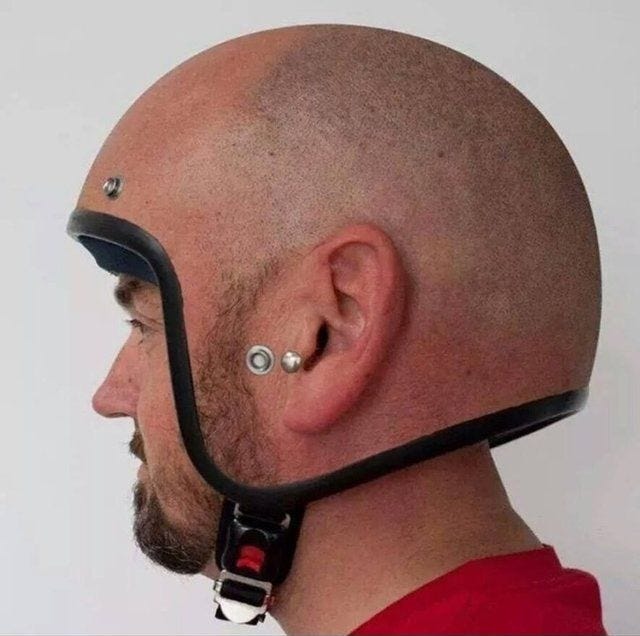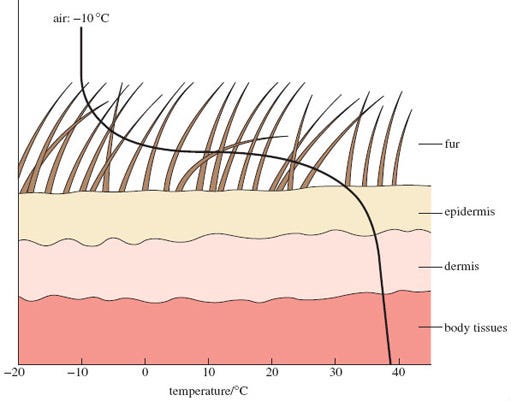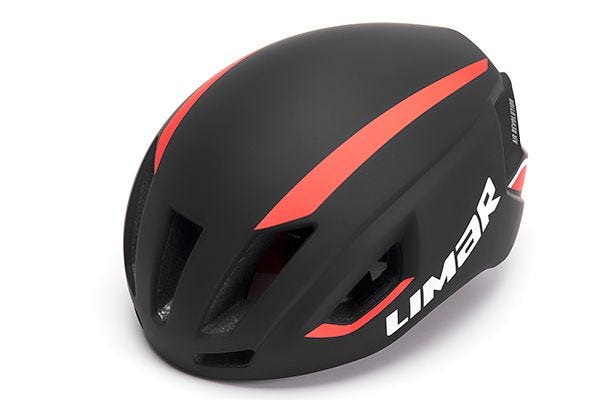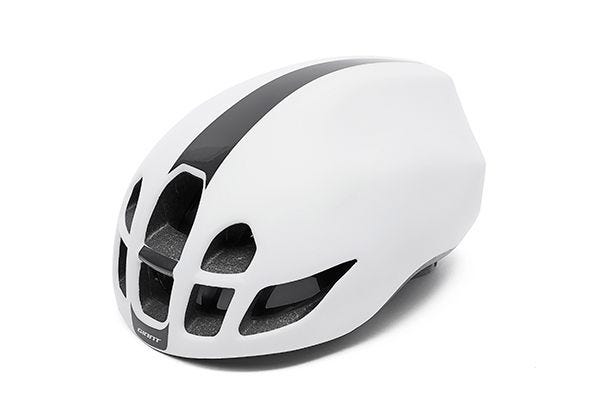Until someone invents a dynamic hi-tech solution, a bald head is the best combo of aero and cooling!

Coached Athlete Rodrigo recently asked me “what is the best aero helmet that offers cooling and aero savings?”
The is an excellent question because it might be impossible to offer both, because cooling requires more air in the helmet, and aero requires less air in the helmet
Fabio Casartelli an Olympic gold medalist died of head injuries in a crash on the descent of the Col de Portet d’Aspet, France, during the 15th stage of the 1995 Tour de France. UCI failed to act but when they previously tried to enforce their use in France in 1991, a strike by pro tour riders (who claimed they increase the risk of heat stroke), forced the ruling body to back down. Then in 2003 the same tragic event occurred when Andrei Kivlev died during Paris-Nice. Finally UCI mandated helmet rule for professional cyclists. Since then, no one has raised any concern, and everyone realizes (much too late) it was the obvious thing to do. In 2019 Luis Ángel Maté said a helmet saved his life when he crashed at the Tour of Poland. Now the very same pro tour riders say helmets are essential.
But before the 00’s most pro riders did not wear a helmet. And putting safety issues completely to the side, the science may be on their side after all. Look at Pantani in particular. His famous bald head won many races and many climbs of this era

The Problem with Hair
The problem with hair is it is an excellent insulator, yes, that’s why it evolved (duh!) and it also ruins your aerodynamics. Air is an excellent insulator, fur traps air just a fraction of an inch of this insulation can keep a body temperature at 104 degrees Fahrenheit (40 degrees Celsius), even in freezing weather as shown in this figure.

and yes, hair also ruins your aerodynamics. Specialized tested this extensively in their “Win Tunnel” series with the following results:
The Beard costs 1second over 40km…
Hair on Arms costs 19 secs over 40km
Hair on Legs costs 82 seconds over 40km.
Ponytail costs 14 seconds over 40km.

So it should be no surprise that big hair is not going to work well when cycling fast. Indeed even when running, I am amazed when I see olympians running with big hair!
It really slows you down at any distance, and the faster you try and run the more it slows you, and the slower your run, the more it cost you in terms of time (on course) so hair is bad for a fast or slow runner or cyclist…..who is going for gold.
Hair is good however on cold days. Ever tried wearing a wig? Try it.
The problem with Vents
Helmet vents are really a drag, and you will improve the CDA of your helmet by around 4% (CDA 0.235 vents open to CDA 0.225) vents closed by using tape / or a bung / or a plastic shell cover. That’s why the Lazer’s Bullet, employ sliding vents

So now let’s consider aero helmets compared especially to a shaved bald head, which it turns out is very aero!
Which is the Fastest Aero Road Helmet?
There have been a large number of aero helmet tests in the cycling press and unfortunately almost all are worthless. Rarely have they tested multiple times for each helmet (to reduce noise), rarely did they start with a no helmet baseline, rarely did they test under controlled conditions, rarely did they test a decent number of helmets and rarely did they try and control for major differences in design like ventilation holes and visor type.
Its really a testing paradox, helmet benefits are *very sensitive to position and fit* and there:
you cannot test in the wind tunnel (and have sufficient time) to get personalized results
you cannot field test outdoors and get reliable results
There are only two kind of tests that work, generic results with a mannequin in the wind tunnel and field tests where the results of the helmet are part of the whole.
Because of this testing paradox we can only give some broad rules as to which is the fastest helmet and this is only possible since good studies came out in 2018,2019, 2020.
220 Triathlon Test
They tested 10 road helmets in the Boardman Performance Centre at yaw angles of 0, 10 and 20°, and at speeds of 35km/h, 45km/h and 55km/h in a fixed position on a triathlon bike (adopting an aero tuck on the tri-bars that was neither too aggressive nor relaxed) and field tested ventilation.
Much of this, of course, depends on an athlete’s abilities to keep their head in the same aero position, but the drag penalties of moving one’s head aren’t as high on an aero lid as when riding in a TT helmet.
#1 S-Works Evade II £200 (score = 93%)

Specialized have spent plenty of time in their own Californian wind tunnel with the Evade II and 220s’ own results across the board once again confirm this. The 12 deep, internal air channels are an improvement over the original (as is the new addition of the MIPS safety system) for warmer high-intensity riding, and the magnetic buckle is great for transition speed and cold post-swim finger use. Weight with MIPS is still a lean 262g but we’d still prefer more adjustment with the side straps, which are oddly fixed in place.
Verdict: light, lean and the fastest here across the aero board 93%
#2 Giro Vanquish MIPS £219.99 (score =85%)

RRP: £219.99 / $280.00 / AU$429.99 | Aero claim: 12 seconds faster than Ballista in a 40km TT at 400 watts | Frontal vents: 4 | Safety: MIPS | Retention: Roc Loc micro-dial adjustment | Sizes: 51cm to 63cm in S / M / L | Weight: 300g (medium) 52g visor. | Pro teams: Groupama FDJ, Canyon Sra
Once used by multi-Ironman world champion Jan Frodeno, the Vanquish MIPS is unique among the competition here as it comes with a magnetic Shield Visor. The visor gives good clarity but there’s a clear gap between that and the face, giving us concerns about detritus flicking up. Which is a shame, as the helmet offers sound ventilation via its 10 well-placed vents, there’s MIPS (Multi-directional Impact Protection System) and comfort from the Roc Loc system (the buckle is fiddly, however). The wind tunnel results (with the visor on) saw it regularly come behind only the S-Works (it was impressive at the 0° yaw angle and 35km/h speed, and was even better in an aggressive aero position), its heavy but it doesn’t feel like a 355g lid when riding.
#3 Limar Air Speed (score =90%) £180

Limar have made a concerted effort to move into the tri market in the last couple of years, attracting British ITU racers into the fold and adding a magnetic buckle on the chinstrap for added transition appeal for cold, post-swim fingers. Limar’s own positive tunnel testing has only extended to athletes riding on the hoods, but now our tri-bar tunnel analysis confirms that this is one swift lid, regularly coming second behind the S-Works and Giro (especially at the key 45km/h speed and 0° yaw angle). In terms of safety, there’s no MIPS protection but the retention system is secure, while venting from the 12 channels on hilly, sticky days is acceptable. Weight, meanwhile, is a decent enough 259g.
Verdict: plenty of tri appeal and success in the tunnel
#4 Van Rysel Racer £40 (score =91%)

Forty quid for a lightweight (260g) helmet with impressive ventilation is a bargain. Forty quid for a helmet that outpunches competitors four times its price in the aero stakes is one of the biggest surprises these pages have witnessed. While it performed poorly at 0° yaw angle (i.e. into direct headwinds), the wider the wind angle, the better it performed. Our recorded segments even showed it beating the best in class S-Works Evade II at 20° yaw angle when riding at 45km/h. The ventilation is the best on test here (Ironman Lanzarote, anyone?) and it only loses marks due to the firm front padding, a tricky to adjust retention system and straps that have a tendency to loosen.
Verdict: mostly great tunnel results at a bargain price 91%
#5 Scott Cadence Plus £170 (score =84%)

Alistair Brownlee wears the Cadence Plus, but happily there are also benefits for us age-group mere mortals. There’s MIPS safety and the addition of Aero Plugs or winter bungs, which can be placed into the ventilation channels on colder days or if you’re truly seeking an aero advantage where heat isn’t a consideration. Those ventilation channels (sans bungs) do the job on the roads, yet the internal padding is somewhat limited, and the 280g weight puts it towards the higher level here. In the wind tunnel it performed well at speeds of 35km/h and at the 10° yaw angle but, strangely for such an aerodynamic-looking lid, less successfully when riding faster at 45km/h across all yaw angles.
Verdict: we like the bungs and venting, but mixed tunnel scores 84%
#6 Bell Z20 Aero MIPS £209 (score = 80%)

With striking looks, effective straps, comfy pads and MIPS protection, the Bell Z20 Aero has plenty going for it. But its weight of 281g is average and, for such an aero-looking lid, it largely placed mid-table in the wind tunnel (it was good at the most critical for long-course triathlon 45km/h with a 0° yaw angle, however), consistently scoring below the Specialized, Giro and, at times, the £40 Van Rysel.
Verdict: Top looks, high price, decent enough in tunnel 80%
#7 Giant Aero Pursuit £190 320g (score =75%)

Size and hefty 320g weight (58g more than the Evade II) are noticeable on the road, catching crosswinds and feeling cumbersome on endurance rides. Where it does impress is in ventilation at speed due to the eight sizeable frontal vents, but it struggled once the Spanish hills arrived. The padding is adequate but the small ratchet isn’t the easiest to adjust. MIPS is a welcome safety feature but there’s just too much strong competition at this price point for this to be a contender.
Verdict: good venting at speed but just too cumbersome for tri and too heavy
#8 POC Ventral Spin £270 (score = 67%)

RRP: £270.00 / US$290 / AU$495.00 | Aero claim: None | Frontal vents: 5 | Safety: SPIN | Retention: Dial adjustment | Sizes: 50cm to 61cm in S / M / L | Weight: 248g (medium) | Pro teams: EF Education First
Poc’s helmets divide opinion in both style and substance, and that continues with the lean 250g Ventral Spin. Good points include the eyewear garage and easily-adjustable straps, while the airflow from the 13 vast vents (utilising the Venturi Effect, where air goes into a wide area and is pushed out through a smaller area) is decent. In lieu of MIPS, POC employs its own padding with impact protection capabilities. Onto the negatives, its slow!
Verdict: good venting but poor tunnel results for the price 67%
Can You Go Faster than an Aero Road Helmet?
Yes, you can. TT helmets have a number of clever features to go faster namely
- covering the ears
- filling the gap behind the neck
- wider = smoother air over shoulders
- minimizing vents
- adding a visor……..
- Better straps….because the straps themselves cost 4-5 watts (see link)
Helmets with Visors
Helmet with a visor are definitely quicker but the effect can be large or small, and it’s usually small, too small to measure in most field tests or on a real person….CDA 0.235 with visor to CDA 0.245 without (on the Kask Bambino) but CDA 0.223 to CDA 0.225 on Giro Advantage. There is definitely a trend towards faster helmets with visors (usually magnetic).
TT helmets with “removal” vents

If you want to beat the above helmets for aero you are going to have to go with a TT helmet and use the vent dictated by the weather. I am talking about a short stubby tail TT helmet, not a long tail because you will look like an idiot! However when D2Z tested helmet tails in the wind tunnel they found “Our research showed us that the tail needed to be wider to provide stable flow off the back of the head and onto the skinsuit. Testing confirmed that the wide tail was faster and also less sensitive head movement and aerodynamic hysteresis.”
Rudy Project Road Aero Helmets
Rudy Project does a full range of helmets and they employed Swissside to aero test a handful in the wind-tunnel with a mannequin.

At 45 km/h over a yaw sweep of -20 to 20 degrees you could save up to 13w using the 2020 Wing with no vents vs a aero-road Volantis.
The chart below is based on an average man weighing 75kg, riding an 8kg bike, at 200 watts over 70.3 distance including 500m of climbing.
My personal recommendation for the fastest vented TT helmets (2020/2021) are:
MET Codatronca TT 2018 $$
Catlike Rapide 2018 $$$
Rudy Project The Wing 2020 $$$
Giro aerohead 2017 $$$
D2Z endura aeroswitch 2019 $$$$
Is a simple solution a hard shell covering the vents?
There is a small saving. At the GST tunnel, Bikeradar tested the Prevail with and without a VeloToz rain cover the saving was only 0.4 watts. So maybe a rain cover doesnt work well. Giro tested their Lazer with and without its plastic cover as well as a Giro Aeon with and without a fabric cover in the wind tunnel back in 2012 and found a slight improvement of 1.5 – 2 watts
Good option, and examples of Helmets with shells are:
Lazer Cosmo helmet with Aeroshell
Catlike Mixno with aero shell
Carnac Notar SLA Superlight
Rockbros MTB/Road helmet
or buy a softcover like the velotoze.com/products/helmet-cover

But what about the Bald Head?
Bald Head vs Road vs TT helmet

Finally, we have the definitive results from Fitzgerald et al (2018) here (LINK)
An aerodynamic study was conducted on eleven high-end ‘aero-road’ helmets with the aim of determining whether a helmet can simultaneously have low drag and efficient cooling. The aerodynamic drag of each helmet was measured using a custom-built cycling manikin at a velocity of 40 km/h with a yaw angle range of 0° to ±25° and at velocities of 50 and 58 km/h at 0° yaw.
Thermal testing of the cooling abilities of each helmet was conducted with a custom-built heated mannequin headform, which incorporated 36 thermocouples embedded within its surface.


Results show the following
- TT helmet was the only helmet to better a bald head for aero!
- All aero road helmets are worse than a bald head for aero!
- TT helmet was +7.5deg (significantly hotter)
- Only 2 helmets were -1deg cooler than a bear head, most were about the same.
Wrapping Up
Abald head is fairly aero and very cool; in fact it is probably the best compromise of aero and cooling BUT your head is also very vulnerable, and you only have one of them, so you would be crazy to race without a helmet. (btw racing with no helmet and big hair is the worst of all worlds).
A road helmet is always a compromise, likely slower than a bald head but if vented cooling is about the same….so if you are not worried about speed, but mainly safety get a cheap but safe helmet.
You can improve the aerodynamics of a stock helmet very simply by taping (some or all) of the vents or using a hard or soft shell. I think these are a good compromise for race day especially in short events.
However nothing beats a full TT helmet because it fills the void between the head -neck and back (and ears)…but it should fit well and in particular the tail should be on your back not up in the air.
Coming soon maybe a clever solution whereby the vents on a helmet open up according to the prevailing wind speed (open when slow)…..whether this saves much time we will have to wait and see!

And did I mention a bald head is free but the helmet under £100 might be the most cost effective major upgrade

Endura’s tables of cost per watt

